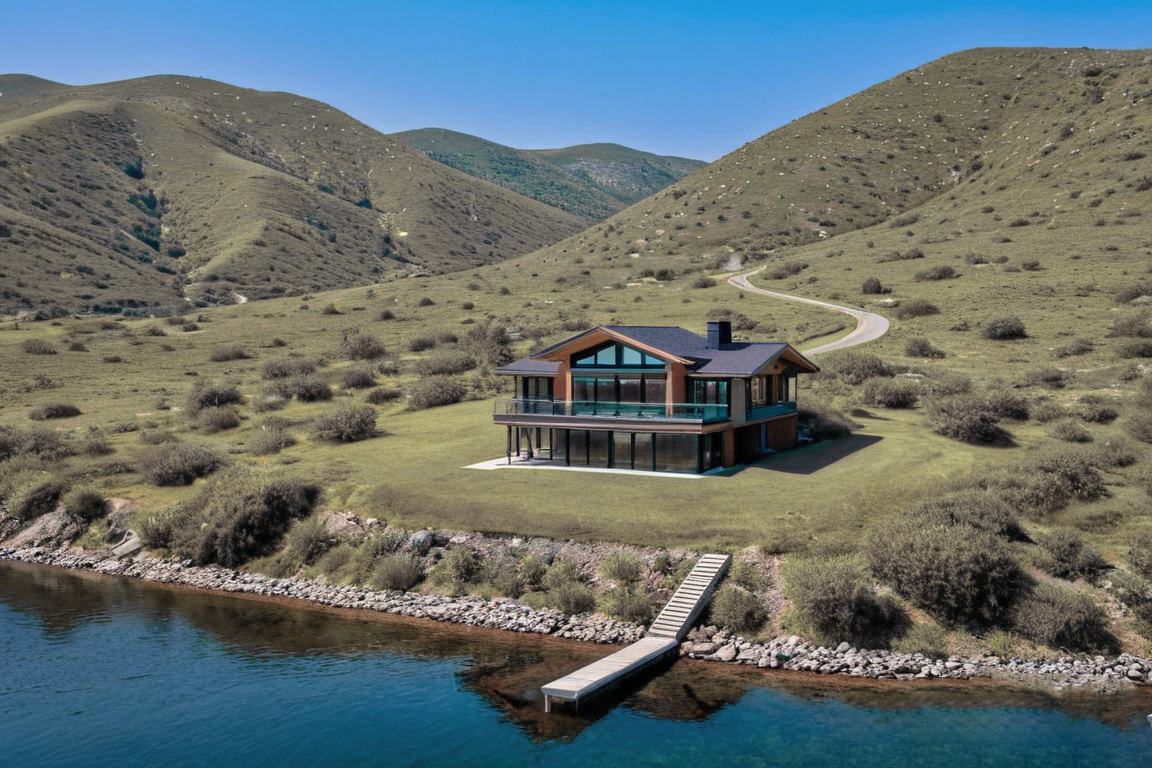Building a custom home on Lake Chelan is an exciting opportunity to take advantage of one of Washington’s most beautiful locations. But designing for this unique climate environment requires some thoughtful planning to ensure your home is comfortable year-round, energy-efficient, and resilient. Here are some key considerations to keep in mind when designing a home on Lake Chelan.
1. Designing for Lake Chelan’s Seasonal Extremes
Lake Chelan experiences hot, dry summers and cold, snowy winters. Your home’s design should work with the environment rather than fight against it.
Passive Cooling for Hot Summers
- Orientation & Layout: Position windows to maximize natural ventilation, taking advantage of prevailing summer breezes off the lake.
- Shading Strategies: Use deep roof overhangs, pergolas, and strategically planted trees to shade windows and outdoor spaces.
- Thermal Mass: Incorporate materials like concrete or stone flooring that absorb heat during the day and release it at night, helping to moderate indoor temperatures naturally.
Passive Heating for Cold Winters
- South-Facing Windows: Maximize glazing on the south side of your home to capture winter sunlight and naturally warm interior spaces.
- Insulation & Air Sealing: Invest in high-performance wall, roof, and foundation insulation and ensure the home is tightly sealed to minimize heat loss.
- Window Placement & Size: Use high-performance, double- or triple-pane windows to reduce heat loss while still providing those signature lake views.
2. Efficient Heating & Cooling Systems
Even with good passive design, supplemental heating and cooling are essential in Lake Chelan’s climate.
- Heat Pumps: Modern air-source or geothermal heat pumps are highly efficient for both heating and cooling, reducing energy consumption compared to traditional systems.
- Smart Controls: Integrate programmable thermostats and zoning systems to heat or cool only the spaces you’re using.
- Renewable Options: Consider integrating solar panels or solar-ready roof designs to offset long-term energy costs.
3. Managing Glare from the Lake
Depending on which side of the lake you build on, morning or evening glare off the water can be intense.
- Semi-Transparent Window Shades: These shades reduce harsh reflections while maintaining natural light and preserving your view.
- Tinted or Low-E Glass: Specialized glazing can reduce glare and heat gain while still allowing plenty of light inside.
- Angled Overhangs or Louvers: Architecturally designed shading elements can cut down on glare without feeling closed off.
4. Firewise Landscaping & Fire-Resistant Materials
Lake Chelan sits in a wildfire-prone region, making firewise design critical.
- Landscaping: Keep defensible space around your home by using fire-resistant plants, maintaining clear zones, and avoiding dense plantings near exterior walls.
- Fire-Resistant Materials: Choose siding, roofing, and decking materials that resist ignition, such as metal, fiber cement, or treated wood products.
- No Ember-Catching Cavities: Avoid architectural details that create pockets where embers can collect, such as open horizontal siding cavities or rainscreens, which are less common in North Central Washington for this reason.
5. Ember-Resistant Venting & Details
- Soffit Vents: Use ember-resistant soffit vents that automatically close or melt shut in the presence of high heat or embers.
- Sealed Eaves & Corners: Design fascia, corners, and under-deck spaces to be tight and enclosed, preventing ember intrusion.
- Roofing Details: Ensure ridge and gable vents are ember-rated and screen all vent openings with fine mesh to block airborne embers.
Conclusion
Designing a custom home on Lake Chelan is about more than creating a beautiful space—it’s about making a home that’s comfortable through all four seasons, energy-efficient, and resilient in the face of environmental challenges. By integrating passive design strategies, efficient systems, glare control, and firewise principles, you can create a home that is both stunning and practical for the unique Lake Chelan lifestyle.
